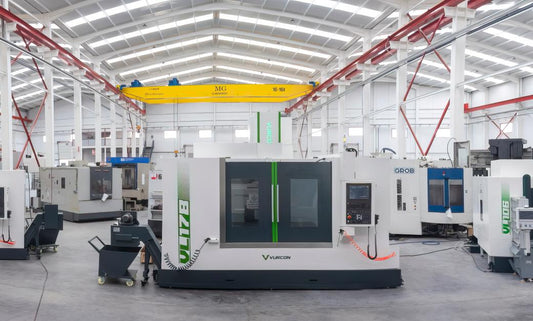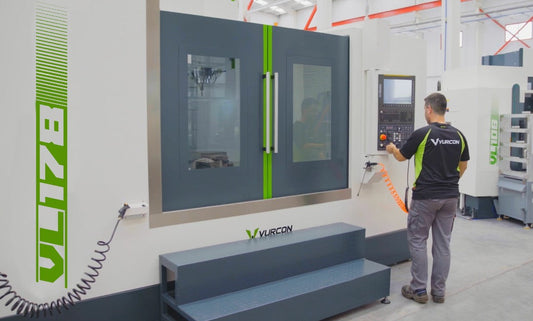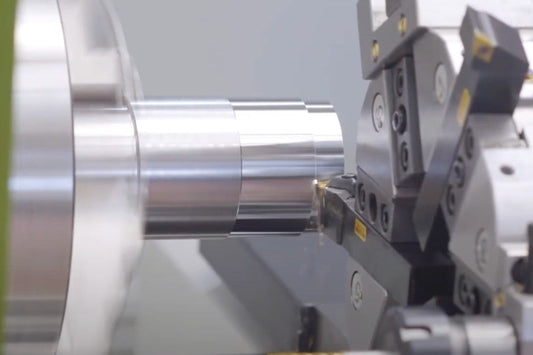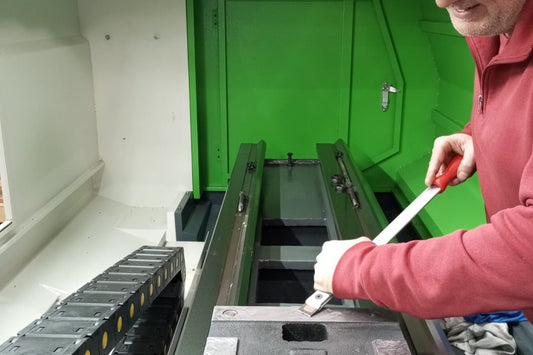This is how the CNC lathe works

Computer Numerical Control, CNC, lathes, are among the most commonly used machine tools in machining workshops. This machine offers multiple benefits for the industry, they are very easy to use, safe, and, in addition, the CNC lathe working does not require the constant presence of an operator, which also reduces these costs.
CNC lathes, a revolution for the machining industry
The lathe is one of the machines used for machining parts by chip removal. This type of device is considered a true revolution for the machining industry thanks to computer numerical control, CNC.
These lathes perform machining tasks using computer software; the software uses alphanumeric data that follow the X and Z axes. Machining parts on this type of machine is much more precise than on manual lathes, since it is the computer that controls the piece being worked on, as well as the execution of the chosen turning program.
Turning
Turning is a type of machining through which surfaces of revolution can be created by chip or small waste removal. The piece is placed on the lathe's chuck and rotates on its own axis; it is here when the lathe's cutting tool, which is mounted on a turret, moves directly towards the piece to remove excess material following a specific path.
The turning process is characterized by the large amounts of material that can be removed, as well as the well-defined and precise finishes. Numerically controlled lathes are capable of performing all the tasks that multiple types of lathes would do separately. In a CNC lathe you can perform any task carried out by a copying, parallel, vertical, automatic, or turret lathe.
The different types of CNC lathes
In the machining industry, different types of CNC lathes can be found. Thus we have:
- Flatbed Lathes, which can, in turn, be classified into two: There are those with a glass safety door and a cooling system, used for machining small-sized parts or for very complex tasks. On the other hand, there are lathes with a cooling system and a programmable electric system with four stations. They are used for precise work on larger parts.
- Slant Bed Lathes: thanks to this bed, the work is very precise and the piece has greater durability and rigidity. In this machine, it is possible to perform tasks, in addition to turning, of milling and drilling.
- Vertical CNC Lathes: they have square guides on their axes to improve the quality of the cut. They are ideal for machining large-sized parts.
CNC lathe working
The CNC lathe is a very easy-to-use tool and does not require expert lathe operators. It is enough to have someone who knows how to use programming software and place the parts when necessary. In a CNC lathe working, the machine's X and Z axes are set in motion simultaneously, as well as alternately; this allows creating conical or spherical pieces.
The tools must be placed in a tool holder and inserted into the lathe's headstock. In this headstock, it is possible to place several pieces at once and use them within the same machining process to give different finishes to the worked piece. The vast majority of CNC lathes can store up to 20 different tool holders that are rotated according to machining needs.
From the computer, the operator can control the cutting speed, the carriage feed, the head rotation and, in general, the entire turning process. This type of machine tools represents a great advancement for the industry, as the tasks are not only easier but also reduce execution times; and CNC lathes operate at high cutting and feed speeds that render manual lathes obsolete.
Numerical control
Numerical control in a CNC lathe working is the key piece. Without it, the machine simply could not function. This technology dates back to the 1940s and is a system that allows automating machines using numbers, symbols, and letters. But to be able to carry out the programming of the machine, two special software are needed, CAD and CAM.
CAD works on a computer, where a design of the piece is made and saved. Subsequently, that design is run through the CAM software, which is responsible for translating it into CNC language and establishing the parameters that the lathe must follow for machining the piece. CNC language, like those used by CAM software, is governed by DIN 66024 and 66025 standards. Here, the characters of the programming language are established, such as N, which is used as a block number and is accompanied by a number between 1 and 999. We can also find the letters X, Y, Z that refer to the coordinates and axes; in the case of the lathe, only two axes are used.




